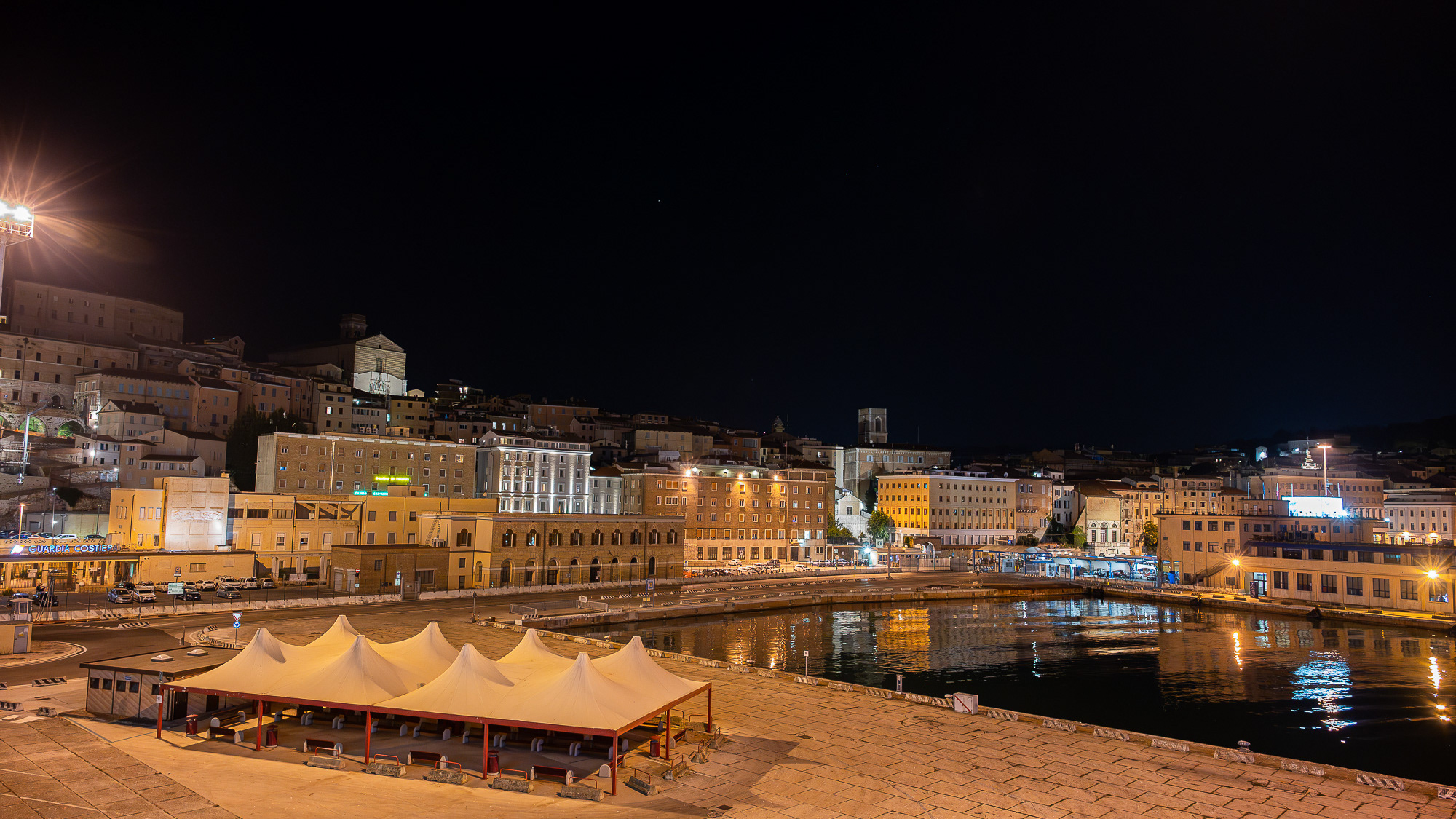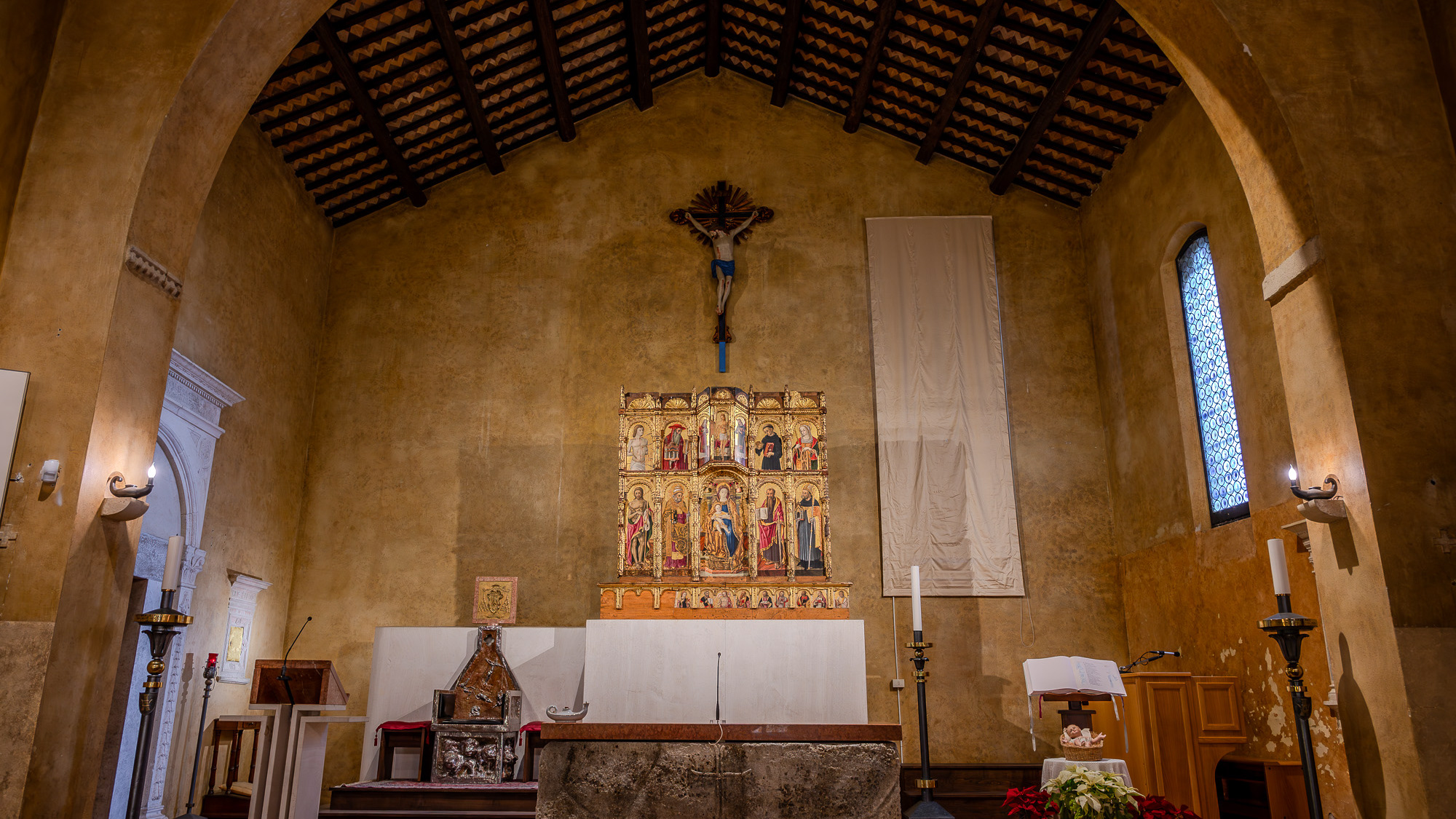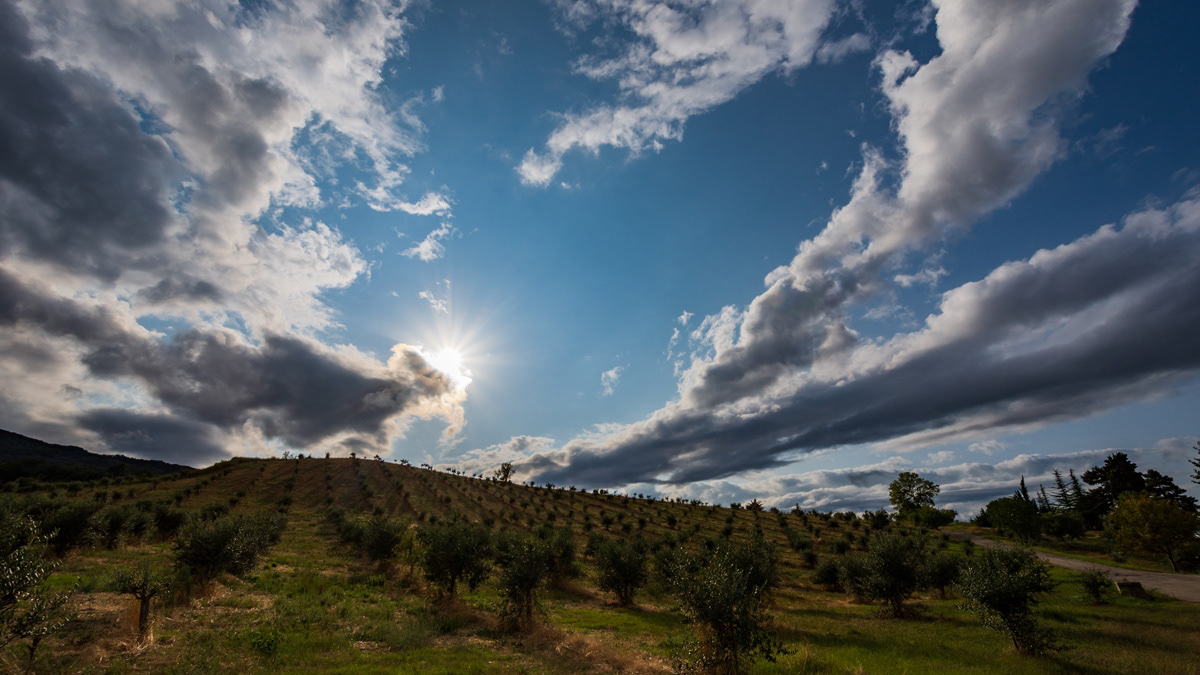Wonderful view of the Marche hills
2022
The Marche, a region of eastern Italy, rises between the Apennine mountains and the Adriatic Sea.
You may also like

2023
Ancona. Night view from the port
2024
Acquaviva Picena. The Clock Tower
Once a civic tower. It dates back to 1300. Surmounted by a small bell tower, it has been transformed into a clock tower.

2025
Grottammare. The Medieval Castle
Sources report news of the settlement on the hill starting from the 11th century, but the origin of the castle could be dated back to the 8th and 9th centuries.

2024
Torre di Palme. Church of Sant'Agostino
Church of Sant'Agostino. the Polyptych by Vittore Crivelli. The building is entirely made of brick and has two entrances. The interior has a single room, covered by wooden trusses.
2022
Ascoli Piceno. The church of S. Tommaso Apostolo
The church of S. Tommaso Apostolo, built in Romanesque style, stands on the side of the homonymous square which houses the remains of the Roman amphitheater of Ascoli Piceno, reinterred in 1974.

2018
Rotella (AP) - Panoramas
2022
Ripatransone. The co-cathedral of SS. Gregorio Magno
The co-cathedral of Saints Gregorio Magno and Margherita is the main cult building in Ripatransone, in the province of Ascoli Piceno, co-cathedral of the diocese of San Benedetto del Tronto-Ripatransone-Montalto. It is a minor basilica and a triple sanctuary, as it also includes the chapel of the Madonna di San Giovanni and the crypt of Mercy and Death, considered temples in their own right.

2025
Offida. Piazza del Popolo, the Town Hall

2025
Montemisio. Sanctuary of the M. Consolazione

2024
Spectacular winter landscape of the Marche hills
